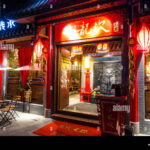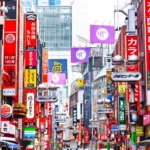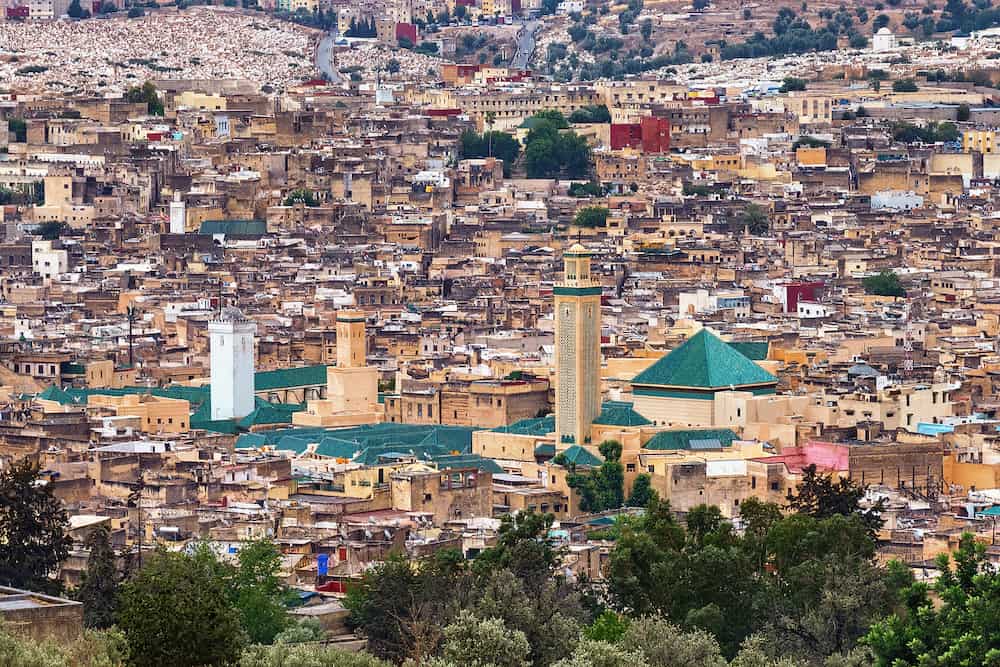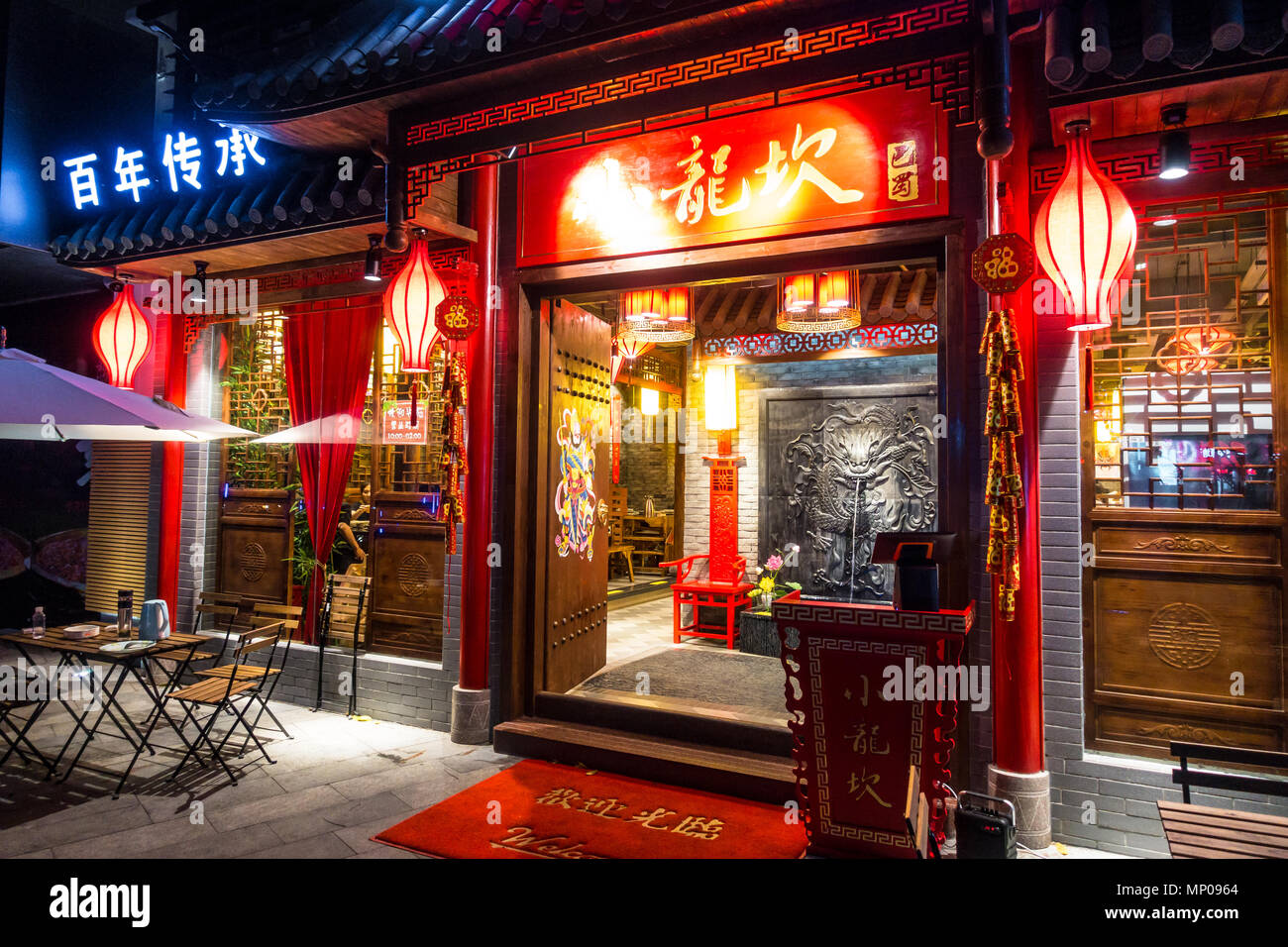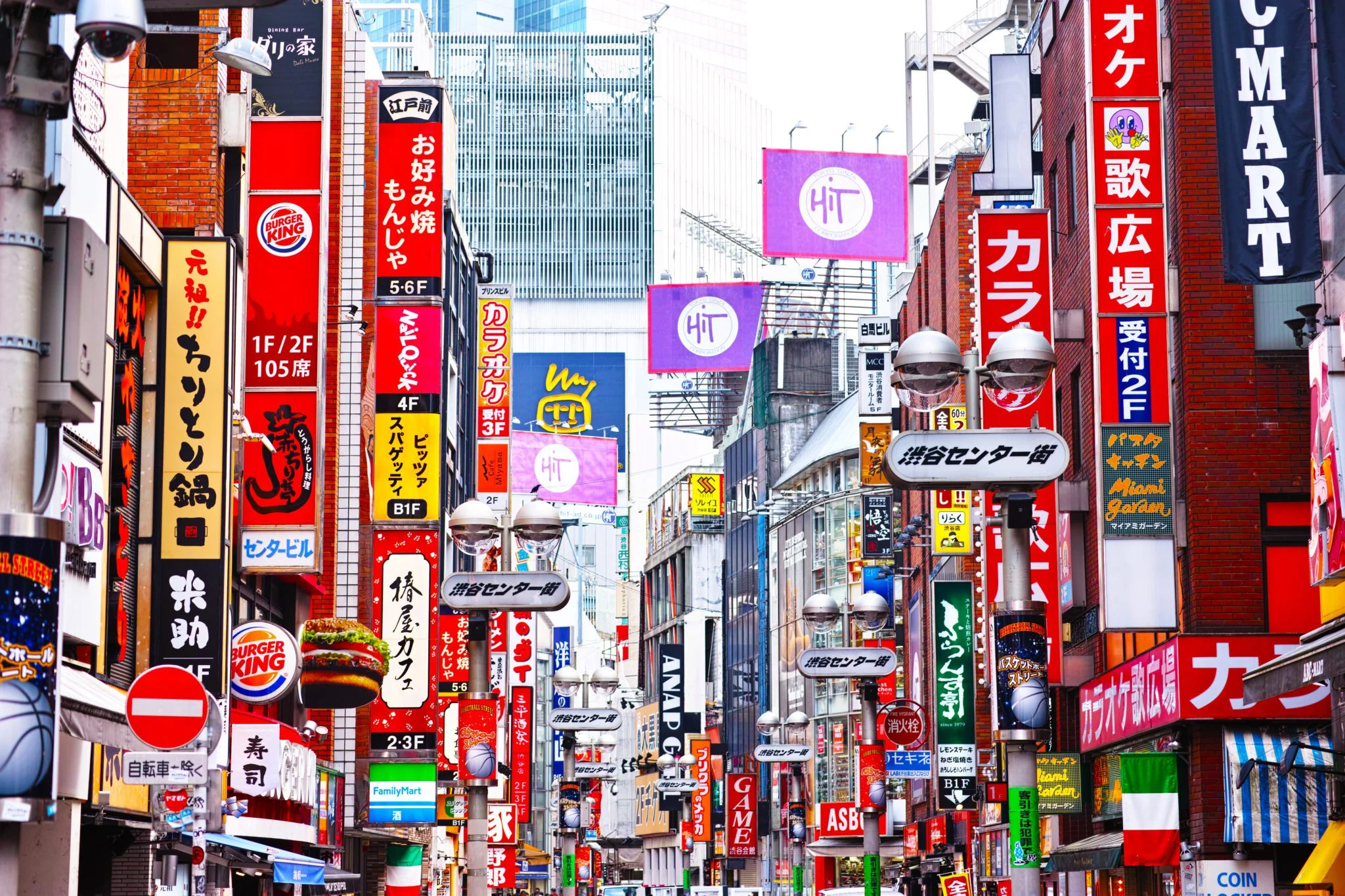Fes, also spelled Fez, is one of Morocco’s oldest and most culturally rich cities. Located in the northern part of the country, Fes is known for its well-preserved medieval architecture, historical significance, and vibrant traditional culture. Here’s an overview of Fes:
1. Medina of Fes:
- The Medina of Fes is a UNESCO World Heritage site and is considered one of the world’s largest car-free urban areas. It is a labyrinthine network of narrow streets, alleys, and bustling markets (souks) where visitors can explore traditional crafts, spices, textiles, and local products.
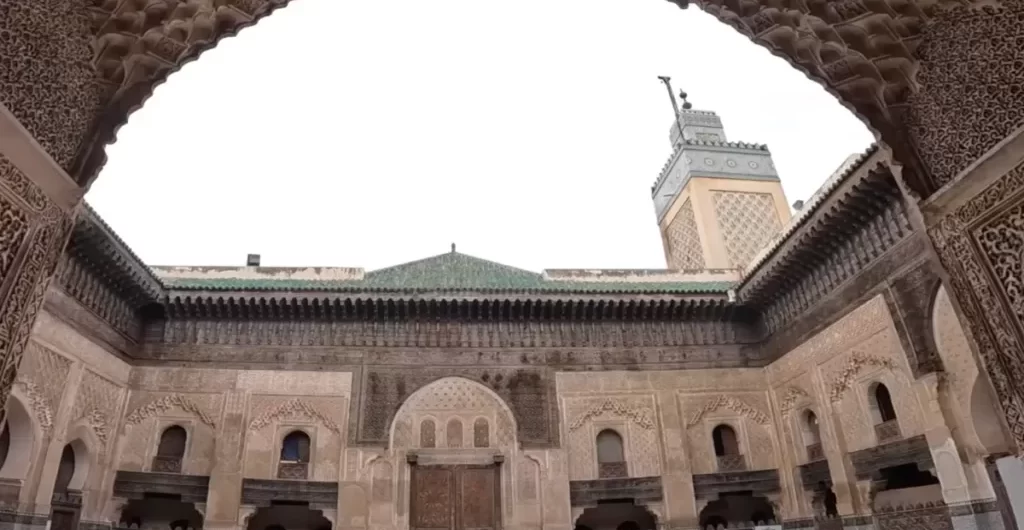
2. University of Al Quaraouiyine:
- Founded in 859 AD, the University of Al Quaraouiyine is recognized by UNESCO and the Guinness World Records as the world’s oldest continuously operating educational institution. While non-Muslims are not allowed in all areas, visitors can explore certain parts of the university and its mosque.
3. Bou Inania Madrasa:
- This 14th-century madrasa (Islamic school) is known for its stunning architecture, intricate tilework, and peaceful courtyard. Visitors can explore the prayer hall, classrooms, and the minaret for panoramic views of the city.
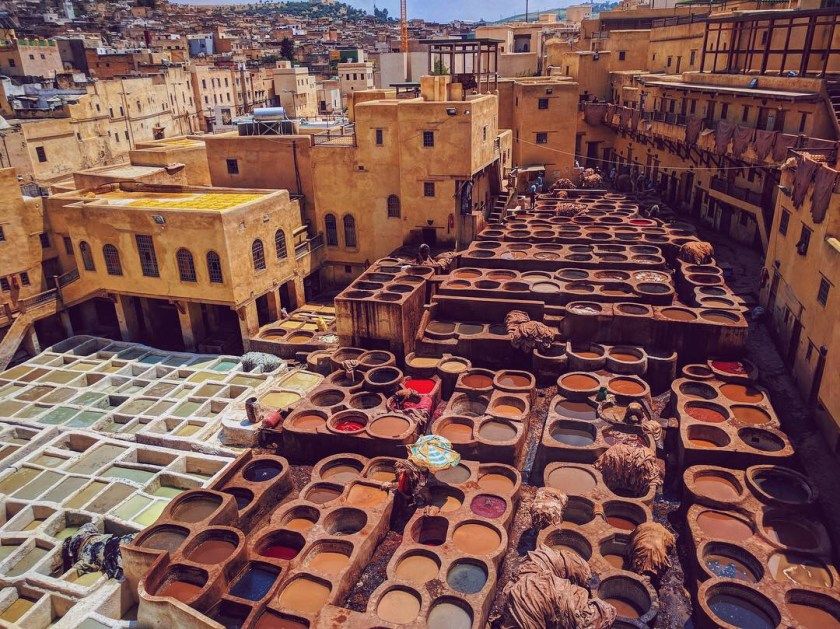
4. Bab Bou Jeloud (Blue Gate):
- Bab Bou Jeloud is one of the main entrances to the old city of Fes. The blue and green ceramic tiles on the gate are a distinctive feature and serve as a welcoming entrance to the Medina.
5. Tanneries:
- Fes is famous for its traditional tanneries, where leather is processed using methods that have remained largely unchanged for centuries. Visitors can observe the tanning process and purchase leather goods in nearby shops.
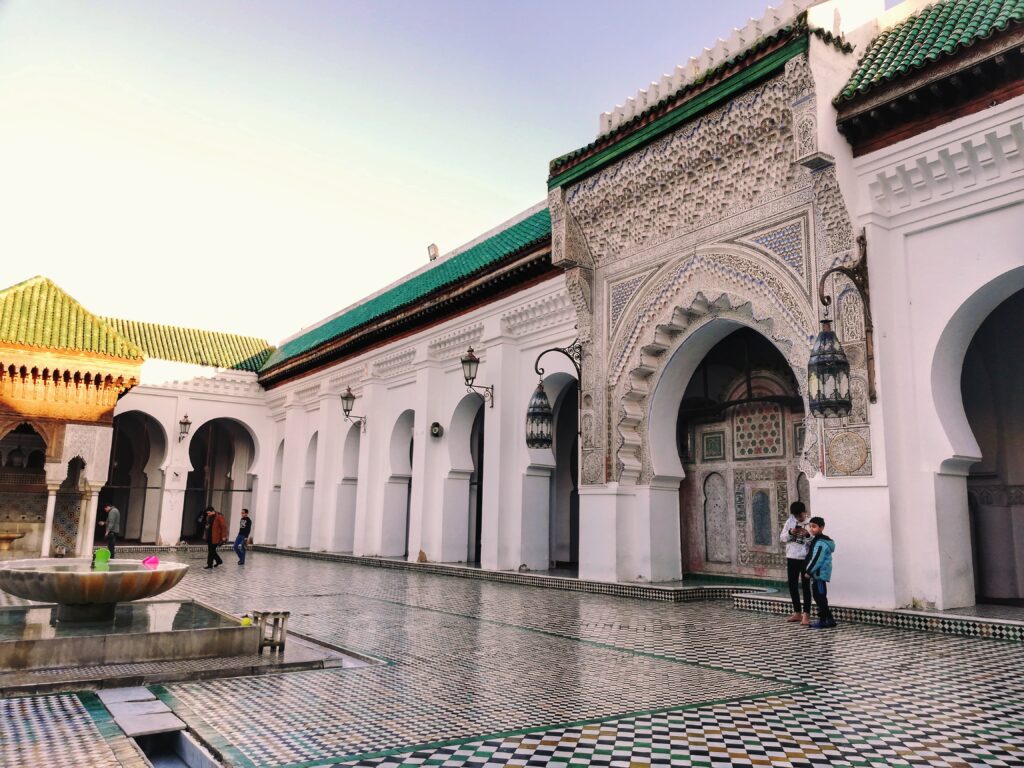
6. Karaouine Mosque:
- Adjacent to the University of Al Quaraouiyine, the Karaouine Mosque is one of the holiest Islamic sites in Morocco. While non-Muslims are not allowed inside, the exterior and surrounding area are architecturally significant.
7. Attarine Madrasa:
- Another beautiful madrasa in Fes, the Attarine Madrasa is known for its intricate zellij tilework, carved cedarwood, and stucco decorations. It provides a glimpse into the artistic and educational history of the city.
8. Mellah (Jewish Quarter):
- Fes has a historic Jewish quarter known as the Mellah. Visitors can explore synagogues, traditional houses, and experience the unique cultural and architectural heritage of the Jewish community.
9. Fes el Bali and Fes Jdid:
- Fes is divided into two main areas – Fes el Bali (Old Fes) and Fes Jdid (New Fes). Fes el Bali is the historic heart of the city, while Fes Jdid, built in the 13th century, houses royal palaces and gardens.
10. Traditional Crafts: – Fes is a hub for traditional Moroccan craftsmanship. Visitors can witness artisans at work, creating exquisite items such as ceramics, metalwork, textiles, and woodwork. The city is known for its skilled craftsmen who have honed their skills over generations.
Fes offers a unique blend of history, culture, and architecture, making it a captivating destination for travelers seeking an authentic Moroccan experience. The city’s well-preserved heritage and traditional way of life provide a glimpse into the rich history of Morocco.




